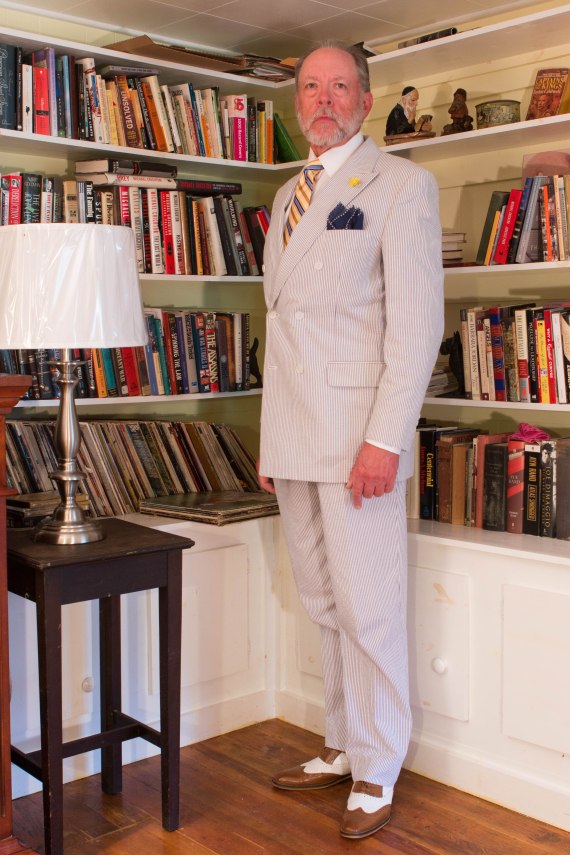How do you feel when you’re wearing your favorite clothes?
How does it make you feel when you attend an event and receive compliments on your attire?
Now put the two together.
Isn’t it great when you receive compliments and you’re dressed in your favorite outfit?
For some of us, that outfit consists of jeans, an oxford button down boasting your favorite college football team, and dark brown penny loafers.
For others, it’s a custom made,double breasted blue suit, French cuffs, subtle cufflinks, and black Allen Edmonds toe cap lace ups. Don’t forget the tie and pocket square.
Clothes make the man?
How about accessories? A nice assortment of pocket squares, neck, and bowties, increases the number of outfits exponentially.
Carly Simon said, “These are the good old days.”
With an awareness of historical fashion and the genealogy of today’s trends in menswear, you can make the present your own “golden age” of gentlemanly attire.
In his book, Gentlemen of the Golden Age, Sven Raphael Schneider offers readers valuable insight and interesting historical facts to enlighten, entertain, and inspire.
What was the “golden age” for men’s fashion? (It wasn’t the roaring twenties.)
Did you know that today’s business suit wasn’t always the preferred attire for executives? (There was no such thing as casual Fridays.)
What’s the difference in a “lounge suit,” a “leisure suit,” and a “travel suit?”
Which is more formal, a single or double breasted jacket?
Who were the pace setters in the States whose influence earned a moniker of its own?
Can you wear white in the winter?
Which men’s magazine started in 1933 and soon became the most influential publication in the menswear industry?
The author provides the answers to these and many more questions in an easy to read conversational style.
While some historical trends are outdated (think corduroy tennis attire!) Schneider says, “…knowing what is historically correct will often make you look more refined.”
 Gentlemen of the Golden Age is divided into four sections, each illustrated with classic images from the era by Laurence Fellows. After the introduction, readers are treated to details on suits, combinations, overcoats, and sports/leisure. In the chapter on combinations, we learn how to break the rules and still look smart. Learn which overcoat to buy if you plan to own only one. (It’s important for those who want to look dapper.) In the chapter on sports and leisure I asked myself, “What do you wear when you’re watching L.S.U. football games?” (Seersucker and white bucks of course!)
Gentlemen of the Golden Age is divided into four sections, each illustrated with classic images from the era by Laurence Fellows. After the introduction, readers are treated to details on suits, combinations, overcoats, and sports/leisure. In the chapter on combinations, we learn how to break the rules and still look smart. Learn which overcoat to buy if you plan to own only one. (It’s important for those who want to look dapper.) In the chapter on sports and leisure I asked myself, “What do you wear when you’re watching L.S.U. football games?” (Seersucker and white bucks of course!)
Do you own a “TV jacket?”
In the end, Mr. Schneider encourages those concerned about “over dressing,” with this reminder, “The point of dressing well is to enjoy it while expressing yourself and your personality.”
Gentlemen of the Golden Age is currently available only as an e-book and is available online, in some cases at no charge.
Interested in learning more of the rules, so you’ll know which ones you want to break, and when it’s alright to do so? Check out Schneider’s site, Gentleman’s Gazette for hundreds of videos and articles. If you’re ready to beef up your wardrobe with attention-getting accessories, check out the offerings of Fort Belvedere HERE. Posters of Fellows art can be purchased HERE.
If you have more than one necktie in your closet, this book should be on your Kindle, I recommend it enthusiastically.
===============
(Images used with the written permission of Sven Raphael Schneider.)






 Gentlemen of the Golden Age
Gentlemen of the Golden Age






